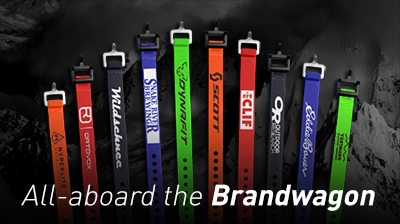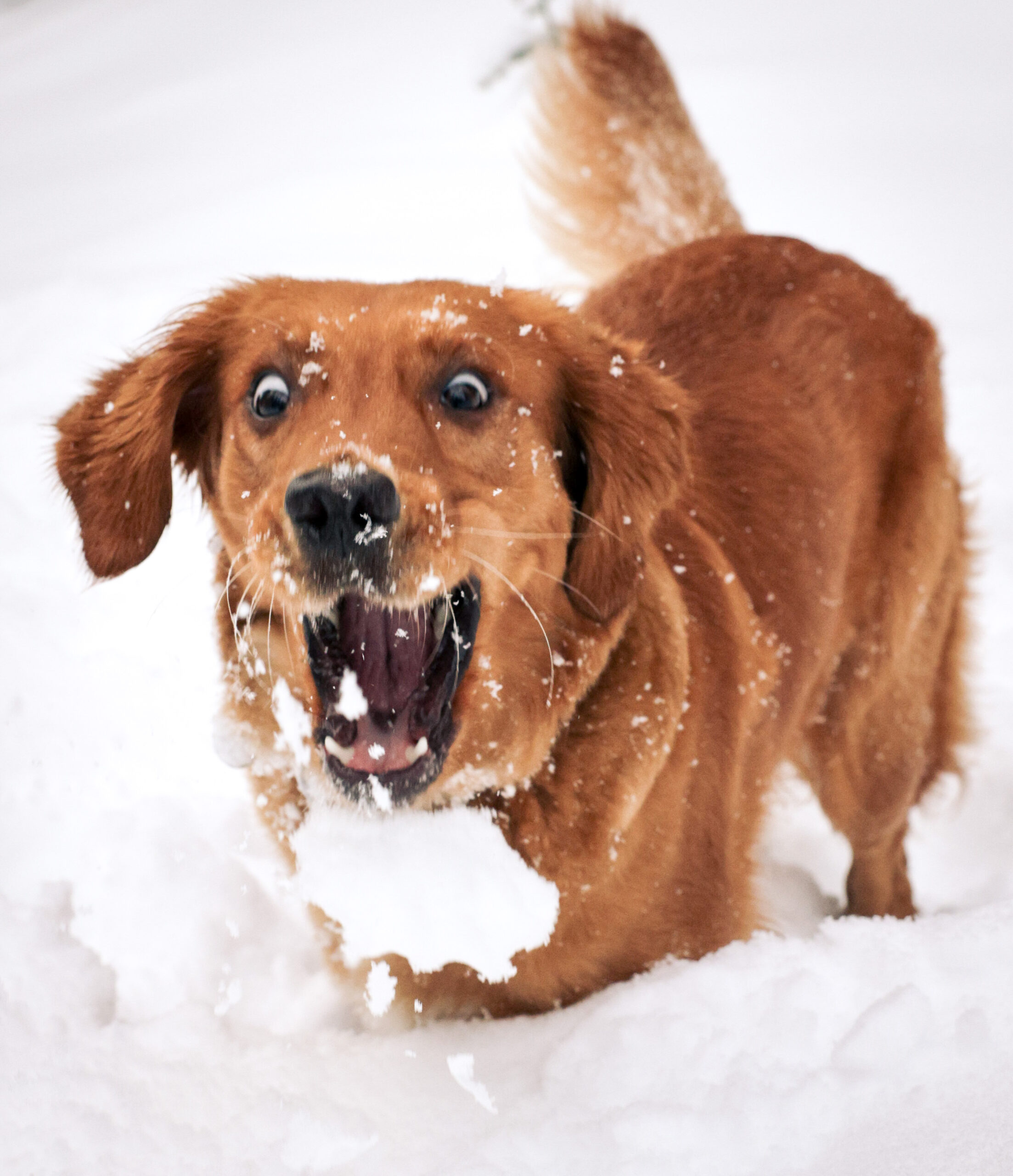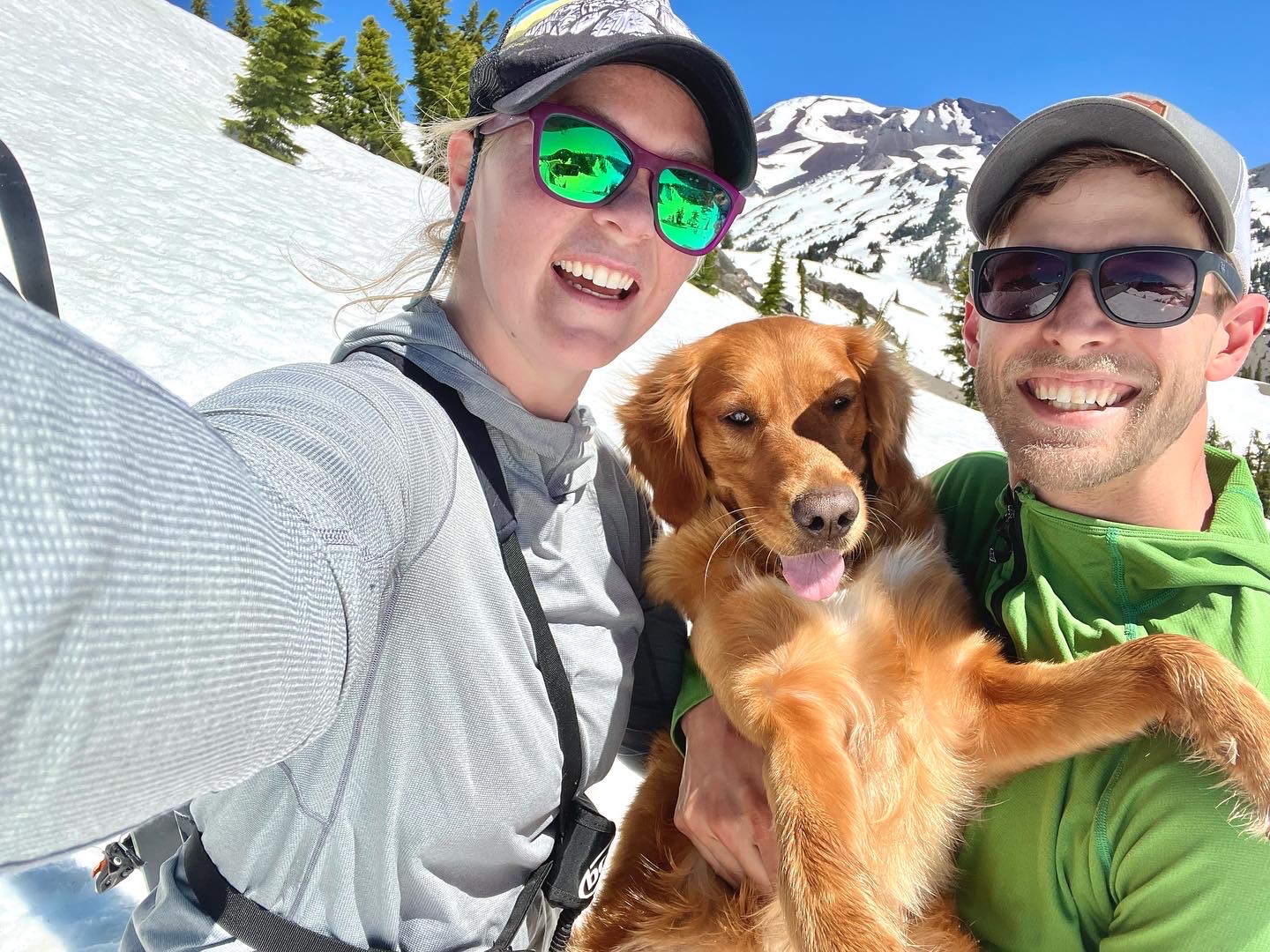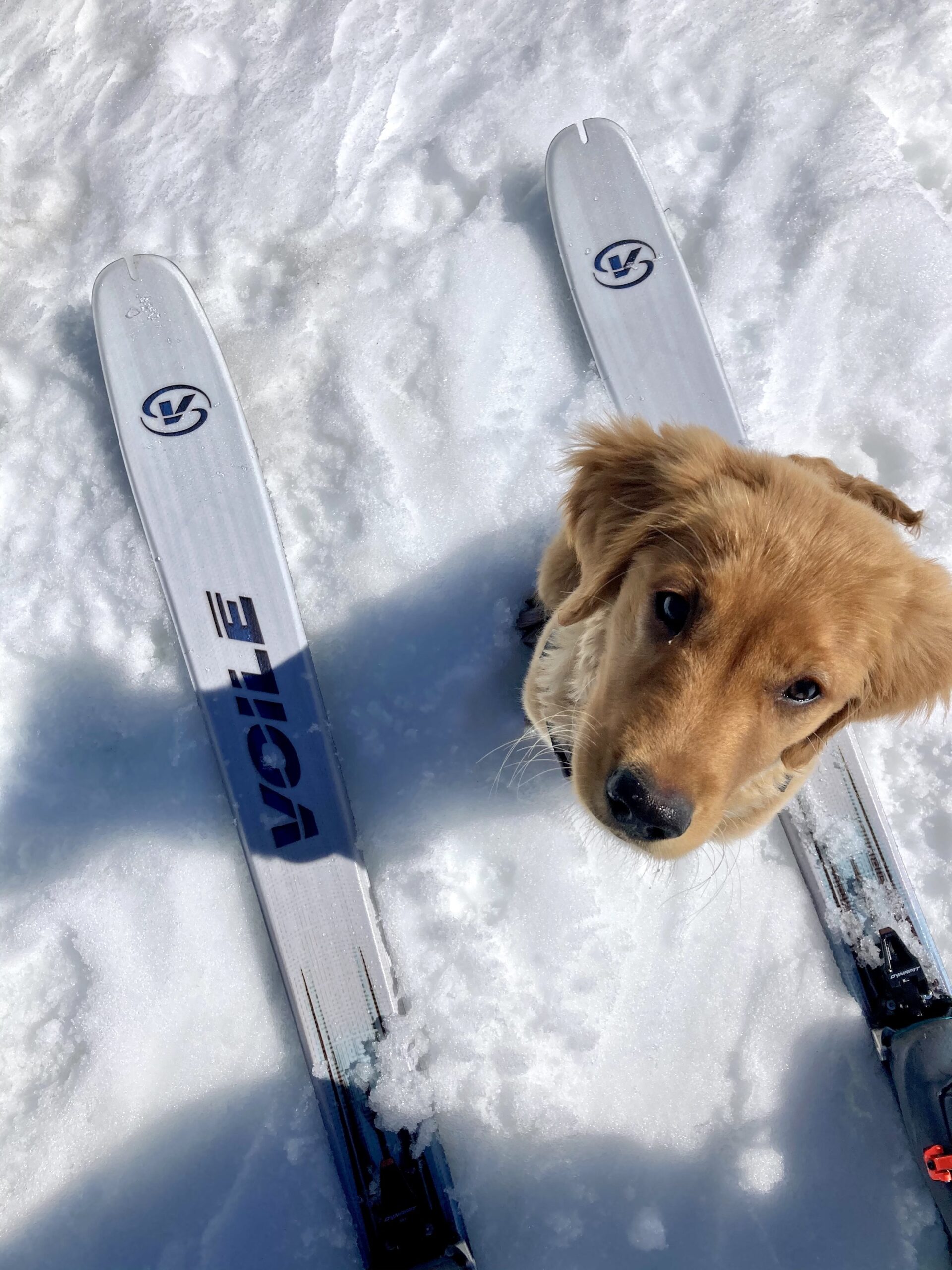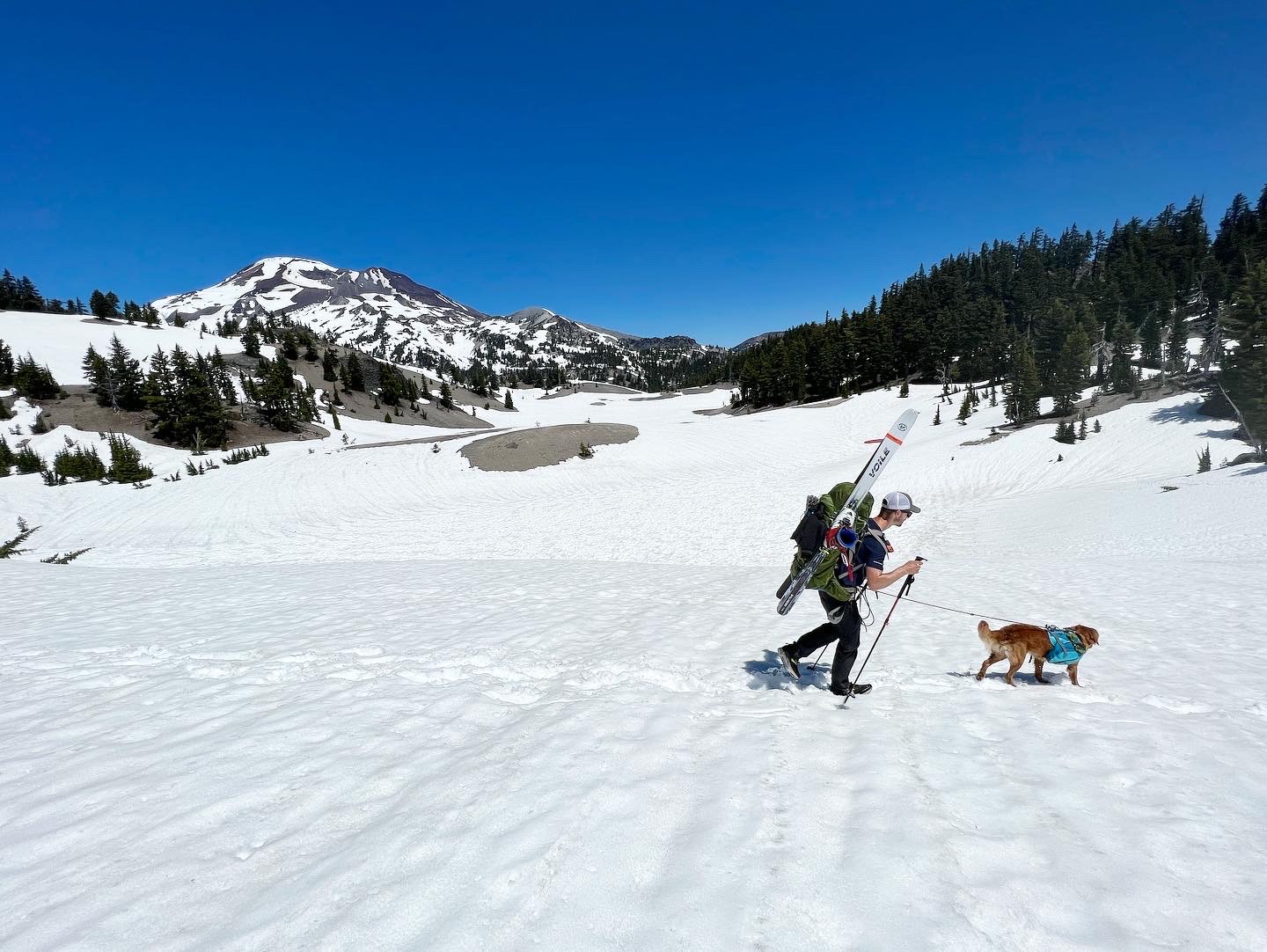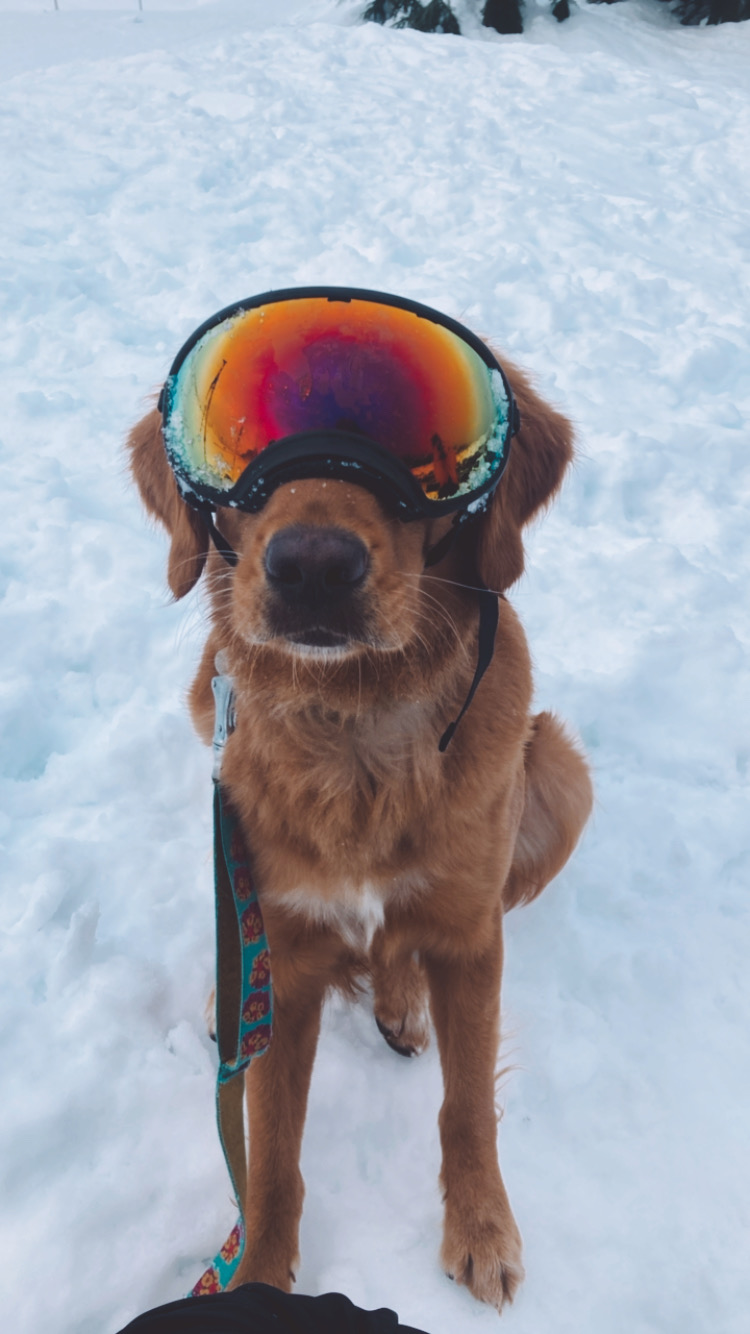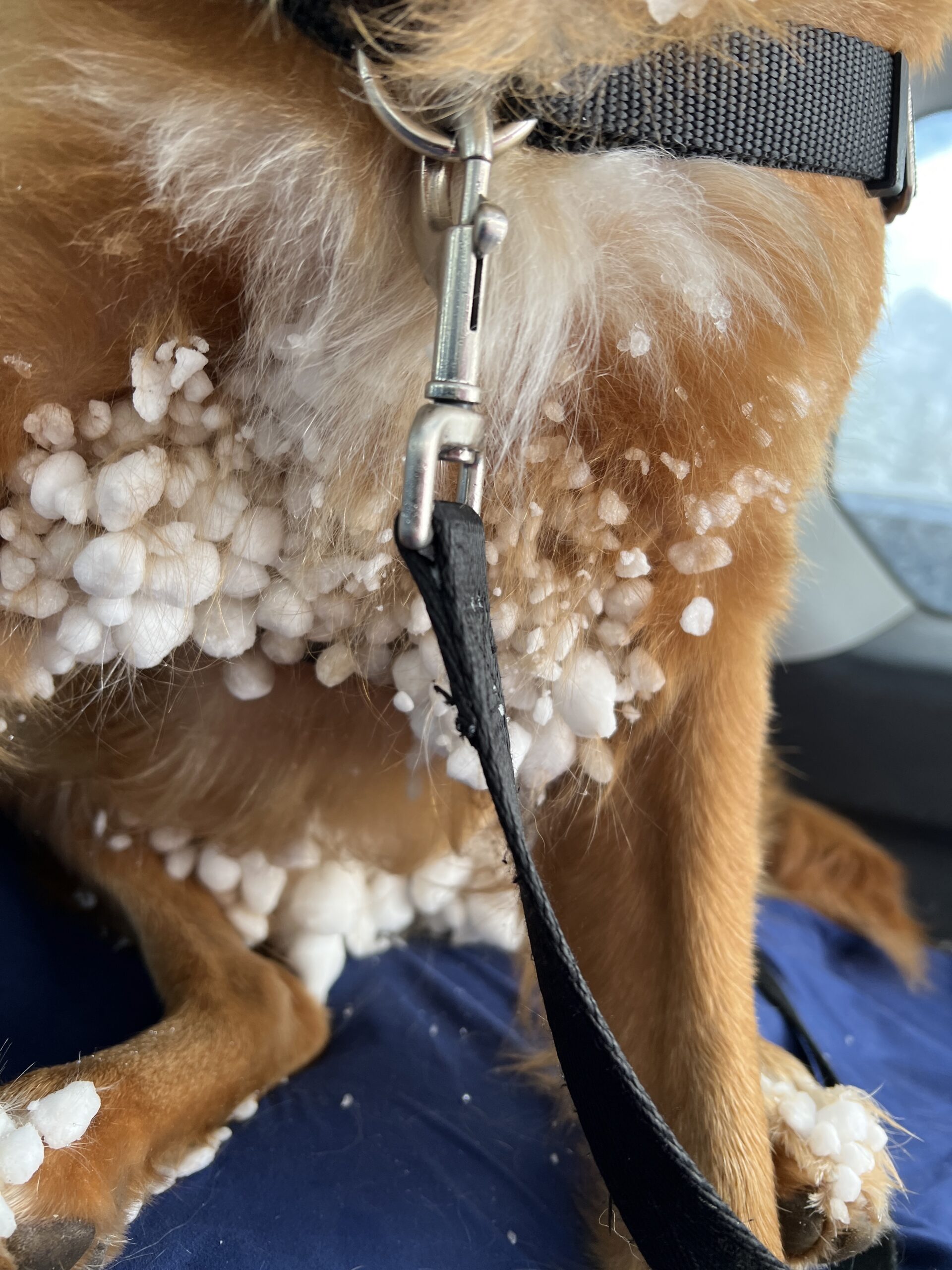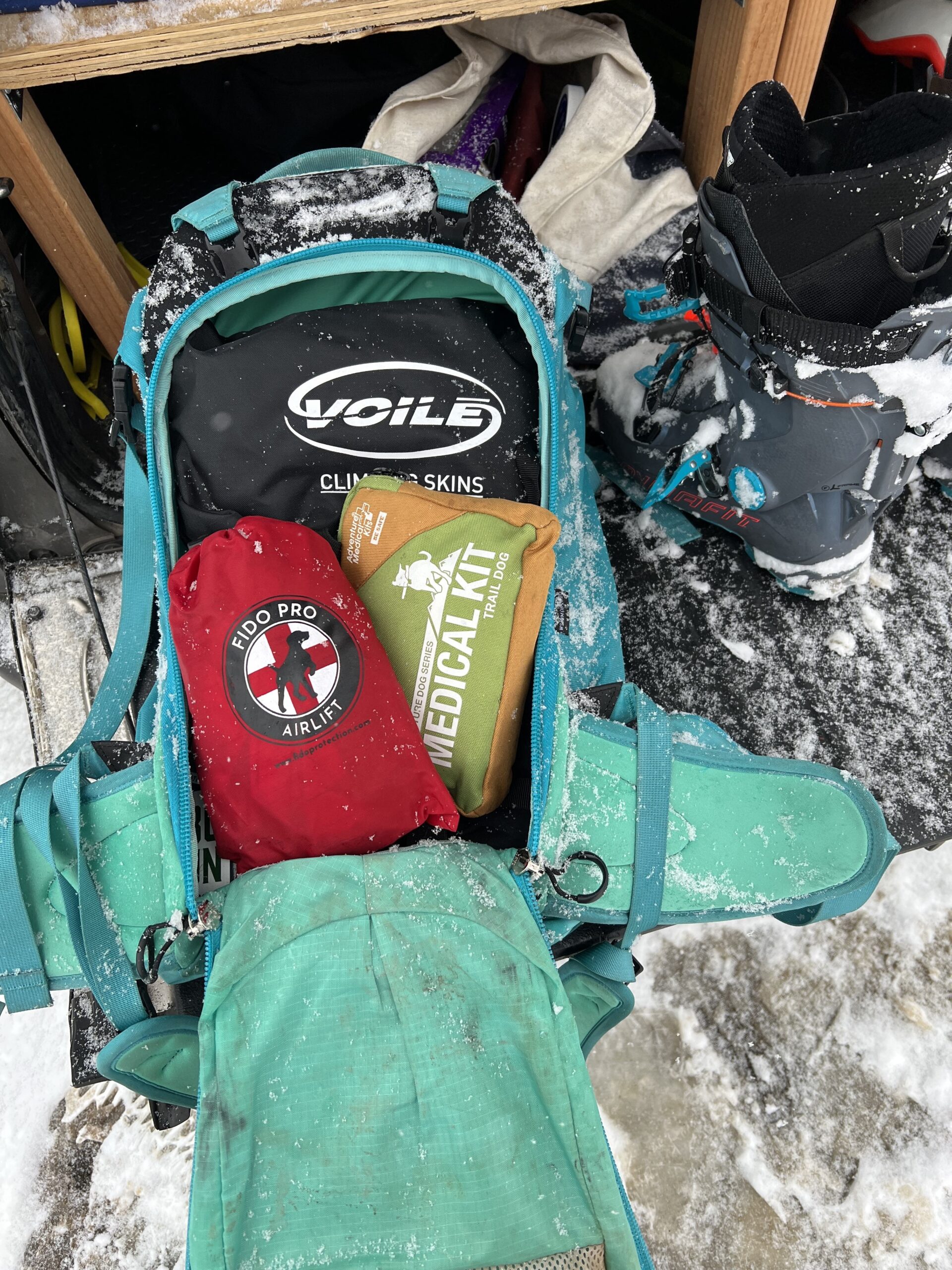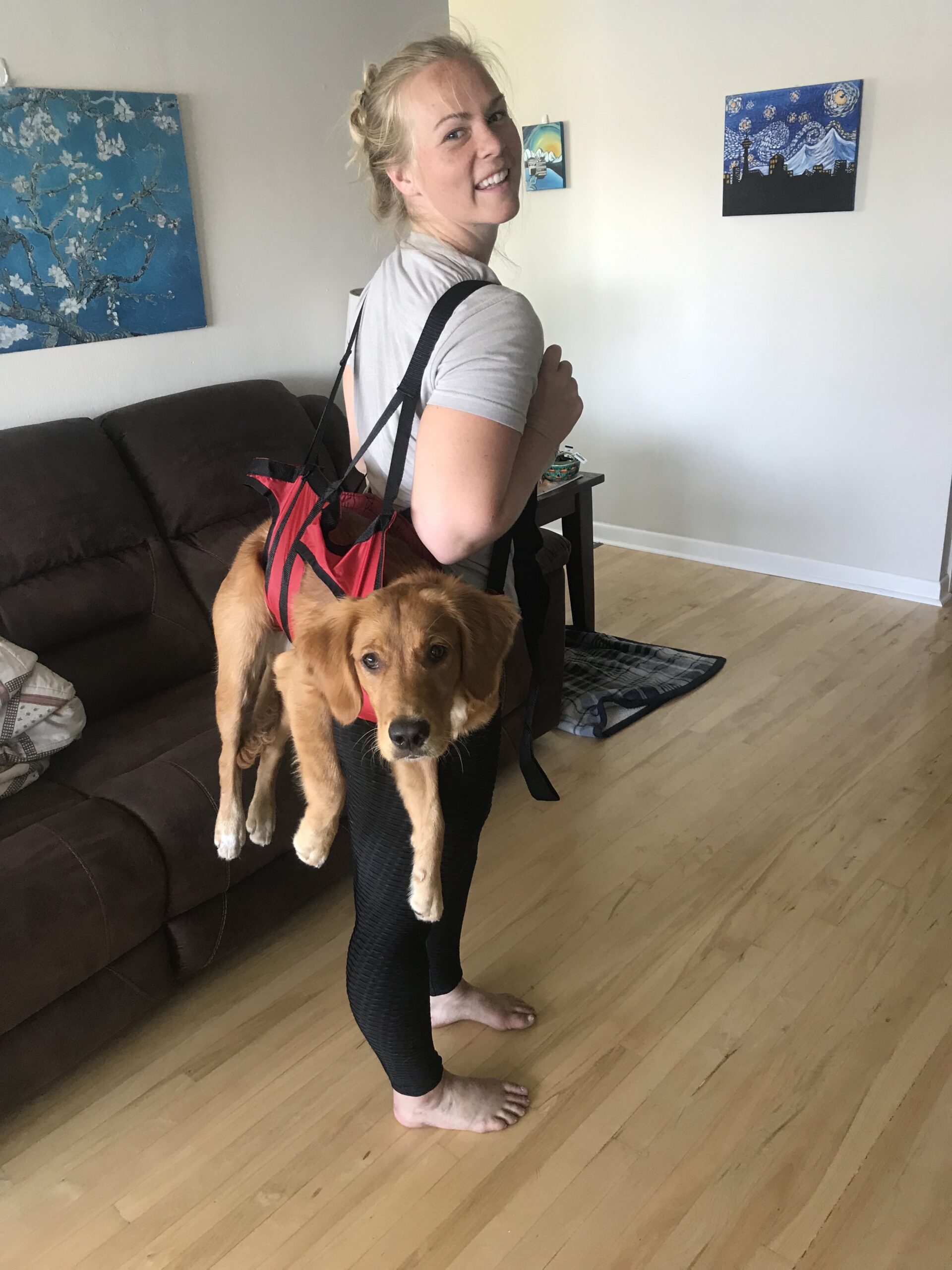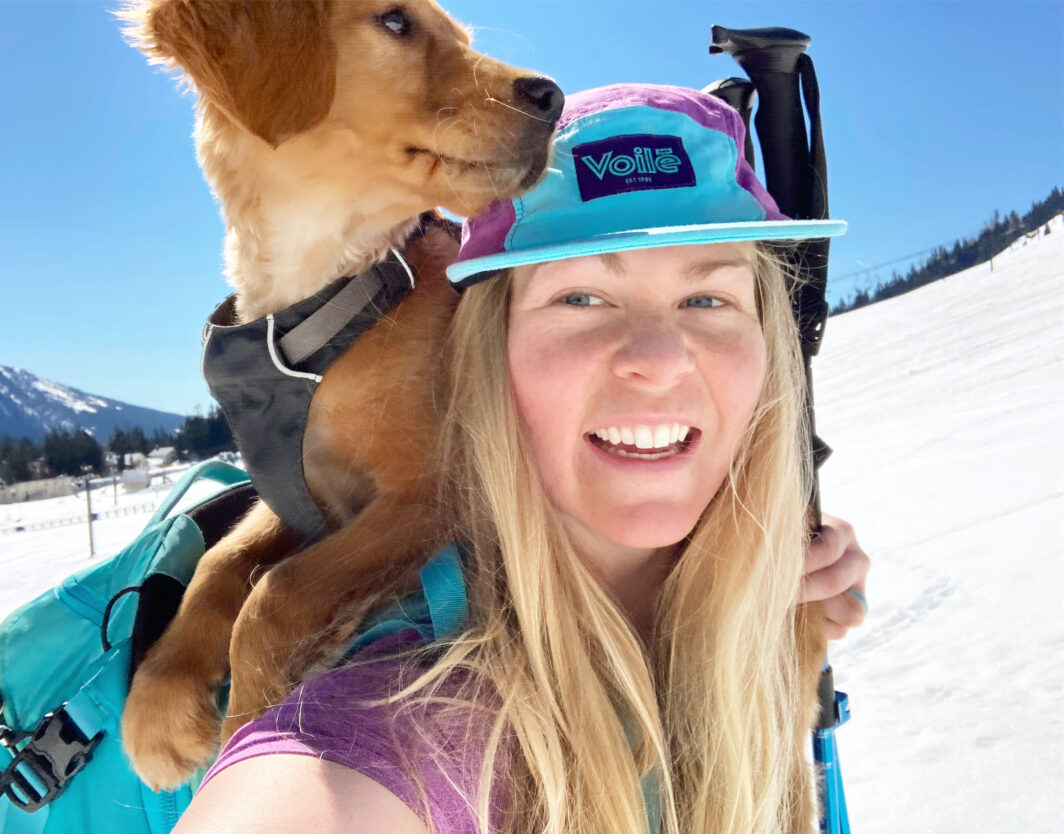
Taking Your Dog Backcountry Skiing
All photos courtesy of Brooke Jackson
Share this Post
Watching 60 lbs of pure fluffy joy barrel down a snowy slope is an unforgettable skiing experience.
Since she was a puppy, my Field Retriever, Eva, has loved snow as much as any Powder Hound out there. As we drive up the mountain pass and hit the snow line, she begins whimpering in excitement and tossing her head back and forth. She’s ready to get after it.
While there are a lot of positives to taking your dog backcountry skiing, there are also a lot of additional considerations, risk management decisions, and, of course, gear.
I’ll preface this article by stating I am not a professional dog trainer, veterinarian, or anything of the sort. I am a backcountry enthusiast who loves to take my dog on as many adventures as I can. While the below advice has helped me and my dog get into skiing together, I would not say it is comprehensive. I’m sure folks out there have additional tips, tricks, and suggestions.
Here are some lessons I’ve learned as a doggy parent that can hopefully help you in taking your dog backcountry skiing:
Start Small
As with any new experience, my first move with Eva is to desensitize and encourage a positive association with the environment. What this looks like for skiing was starting as small as bringing my ski gear out of the closet and letting her sniff my pack, my skis, my boots, etc.
Every time she sniffs something, I give her a treat. Once she’s comfortable with the gear, I then start transitioning my bindings and heel-locking my boots. At first, she was startled by the sound, but I persisted until she realized it was not a big deal. She eventually came over to me and I’d give her rewards.
This process then progressed from our living room to our backyard, repeated, and then eventually at a snowy parking lot.
Once she was comfortable with the gear, my next big challenge was to work on her training responses in a snowy environment. This was a huge obstacle because listening to me was not what she wanted to do – she would much rather roll in powder, eat snow, and frolic (who can blame her.)
Progressing To Snow
Our first few trips to the mountain didn’t include her skiing. Instead, I put her harness and a long-lead leash on, and we practiced her recall and additional commands which earned her a high-reward treat (freshly boiled chicken – THE BEST).
We’d also watch others ski, let them come up and say “hi” with their gear, and encouraged that ski areas are a pretty awesome place to be as a dog.
Finally, once I knew she was comfortable and knew to listen even in this very exciting environment, our first “tour” was me carrying Eva up a small slope right next to a parking lot, teaching her “send it” followed by the slowest turns of my life.
This was to teach her how to follow my line, to stay away from my skis while in motion (I taught her to stay a ski-pole-length away when going downhill), and a few other additional training moments. I repeated this single slope run probably half a dozen times with her on multiple occasions before I took her into the backcountry.
Now, after taking these small foundational steps, Eva is a great listener on the slopes, even on powder days.
Dog-Friendly Tours
Even having the best-trained dog with you is still an additional hazard. There are a lot of things that could still trigger unexpected behavior. Therefore, I only take Eva on very casual, easy tours in minimal avalanche conditions in less popular areas. If it’s a holiday weekend, or typically even just a weekend in general, we don’t go out. Eva is a mid-week ski kind of dog.
This is for her safety, as well as the safety of those around her.
I encourage if you’re considering taking your dog backcountry skiing to keep these factors in mind and be content with not doing the biggest, gnarliest day on the mountain. Skiing with your dog is Type I fun if done in a low-risk, uncrowded environment.
Additionally, be sure to check the land management guidelines for if dogs are allowed in the area. Most National Parks do not allow dogs, so we stick mainly to National Forest.
Keep Them Comfortable
One of the first mistakes I made with Eva was not realizing just how badly her coat would attract snowballs. The poor thing barely made it a mile before she was weighted down with these darn things.
Which is when I learned of our new favorite thing – Musher’s Secret.
We use this balm on her paw pads before big trail runs and mountain biking days, and also will coat her entire underside in it for ski days. This beautiful creation greatly minimizes her snowballs and also helps keep her paw pads from splitting.
However, if you find yourself in a situation where you don’t have a balm and your dog got some snowy balls, a nifty trick is to use a whisk to break up the clumps. We still keep a whisk in our car for just the occasion.
Additionally, Eva has a double coat which tends to wick moisture and keep her warm. That said, I still carry an extra towel on overnight trips to help dry her off after activity. We also have a RuffWear Sleeping Bag for her to curl up in at basecamps and in our tent. If your dog has shorter hair, it may be worth looking into insulating jackets or other ways to help keep them warm in cold mountain environments.
The final piece of the puzzle for keeping Eva comfortable was Snow Goggles. She’s not a huge fan of these, so we typically only bring them out on bluebird days to help prevent reflection blindness.
Emergency Pre-paw-edness
Just like any backcountry activity, being prepared for emergencies is essential.
Unfortunately, I’ve seen and heard of many dogs getting injured while backcountry skiing. One of the most common is severe lacerations from encountering sharp ski edges. It’s important to know this is a prevalent risk factor so that you can take steps toward mitigating the likelihood.
However, accidents still happen, and having gear for your best friend is important.
For every adventure I take Eva on, skiing or not, I carry a Trail Dog Medical Kit and a Fido Airlift.
The Airlift is a compact harness that, in a worst-case scenario, I could sling Eva on my back and carry her out.
I also bring an extra pair of old socks in case she gets an injury to her paws/pads that I need to try and minimize her licking or getting infected, a bear bell that she wears any time she is off-leash, and extra dog food plus water.
There are also online courses for dog first aid that I highly recommend so that you can have some skills for responding to various common injuries.
Conclusion
Eva doesn’t go on every ski tour with me, because as you can see, there are a lot of additional gear considerations, safety concerns, and slow training steps when taking your dog backcountry skiing.
But when done responsibly, it is a great activity to do with your four-legged friends.
I hope you and your powder hounds have a blissful day playing in the snow together!
About The Author
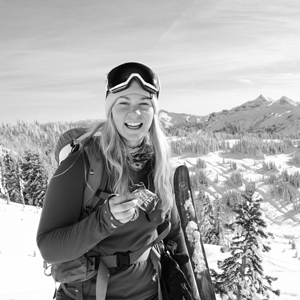
Location: Seattle, WA
Top Gear Picks: UltraVector 171cm / V8 176cm
Instagram: @wanderingtrailsmedia
Website: www.wanderingtrailsmedia.com
Brooke Jackson (she/her) is the founder of Wandering Trails Media, a media creation agency where she utilizes her storytelling skills to uplift the voices of others. Oftentimes, Brooke is behind the camera as a Photographer and Producer, yet is also known to scribble the occasion written feature. Outside of her professional endeavors, she is a volunteer with Olympic Mountain Rescue, as well as the Kitsap County Search Dogs with her Field Retriever, Eva.
Share this Post



